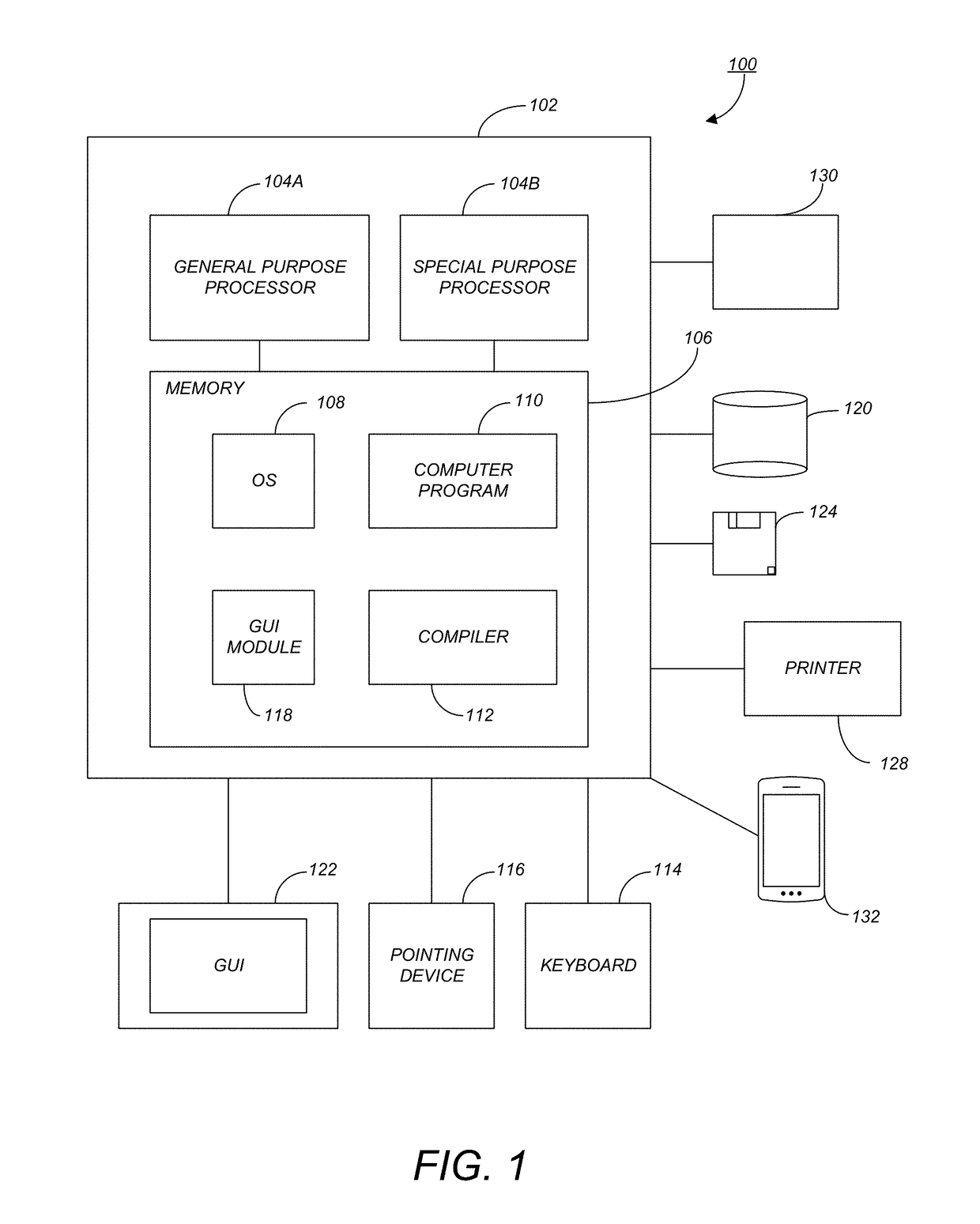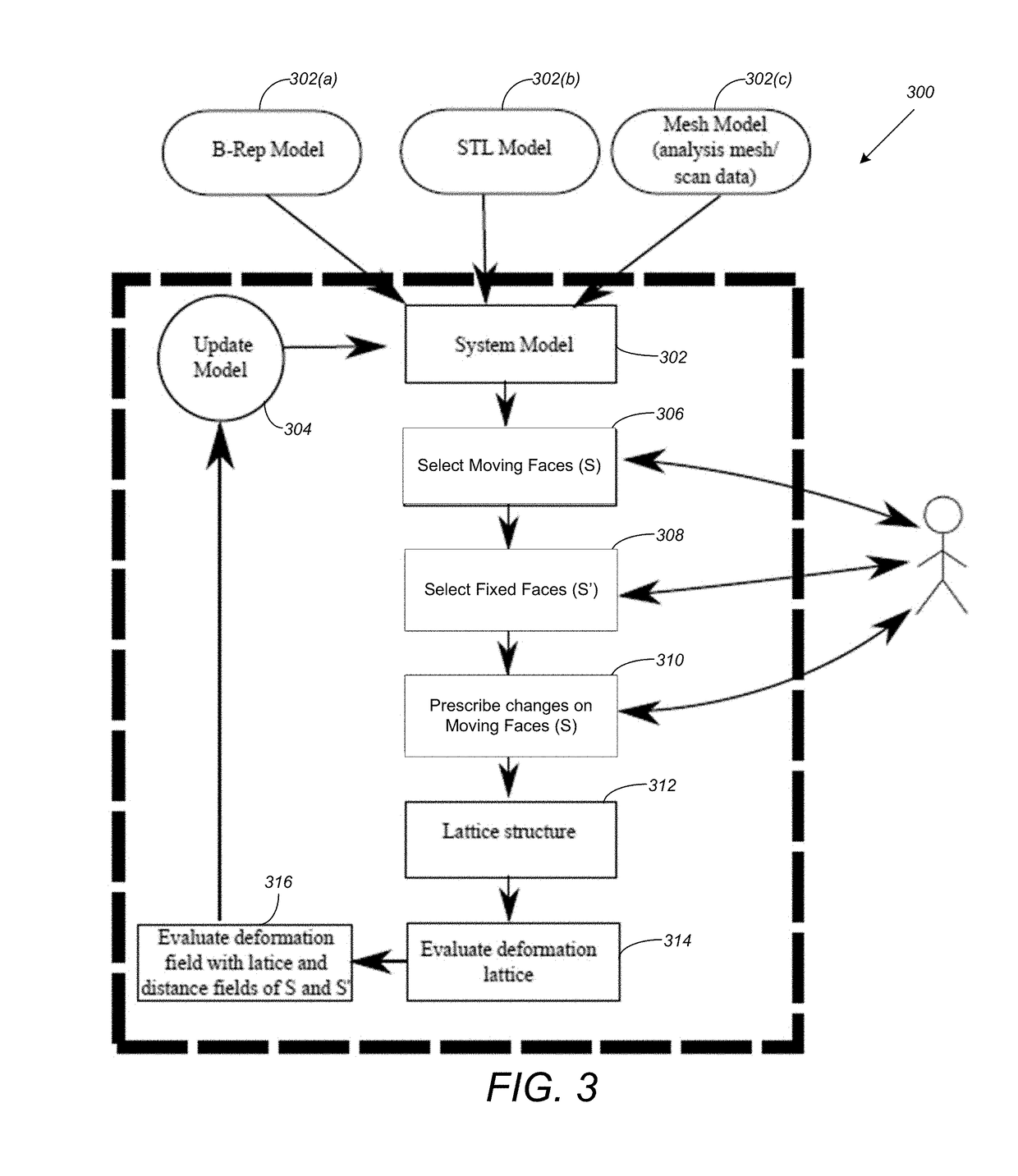Distance field coupled fitted deformation lattices for shape modification
a deformation lattice and distance field technology, applied in the field of computer-aided design (cad) and simulation, can solve the problems of not being able to reliably and automatically extract features from commercially available software, unable to establish straightforward relations between b-reps and design parameters, and unable to achieve the effect of achieving the effect of reducing the number of features
- Summary
- Abstract
- Description
- Claims
- Application Information
AI Technical Summary
Benefits of technology
Problems solved by technology
Method used
Image
Examples
Embodiment Construction
[0036]In the following description, reference is made to the accompanying drawings which form a part hereof, and which is shown, by way of illustration, several embodiments of the present invention. It is understood that other embodiments may be utilized and structural changes may be made without departing from the scope of the present invention.
Overview
[0037]Embodiments of the invention provide a framework and a tool to effect shape changes and parametrized edits to “dumb geometry” by effectively making them “smarter”. In addition to BREPs from CAD systems, a tool in accordance with embodiments of the invention can be applied to “loose surfaces” or discretized geometry such as surface or volume meshes. Using such a tool, the designer can make complex changes to geometry without requiring the source CAD system. In addition, an engineer or analyst can make parametric changes to dumb geometry without needing access to the authoring CAD tool.
[0038]Some of the components that are unique...
PUM
 Login to View More
Login to View More Abstract
Description
Claims
Application Information
 Login to View More
Login to View More - R&D
- Intellectual Property
- Life Sciences
- Materials
- Tech Scout
- Unparalleled Data Quality
- Higher Quality Content
- 60% Fewer Hallucinations
Browse by: Latest US Patents, China's latest patents, Technical Efficacy Thesaurus, Application Domain, Technology Topic, Popular Technical Reports.
© 2025 PatSnap. All rights reserved.Legal|Privacy policy|Modern Slavery Act Transparency Statement|Sitemap|About US| Contact US: help@patsnap.com



